July 10, 2016
Martha O'Kennon
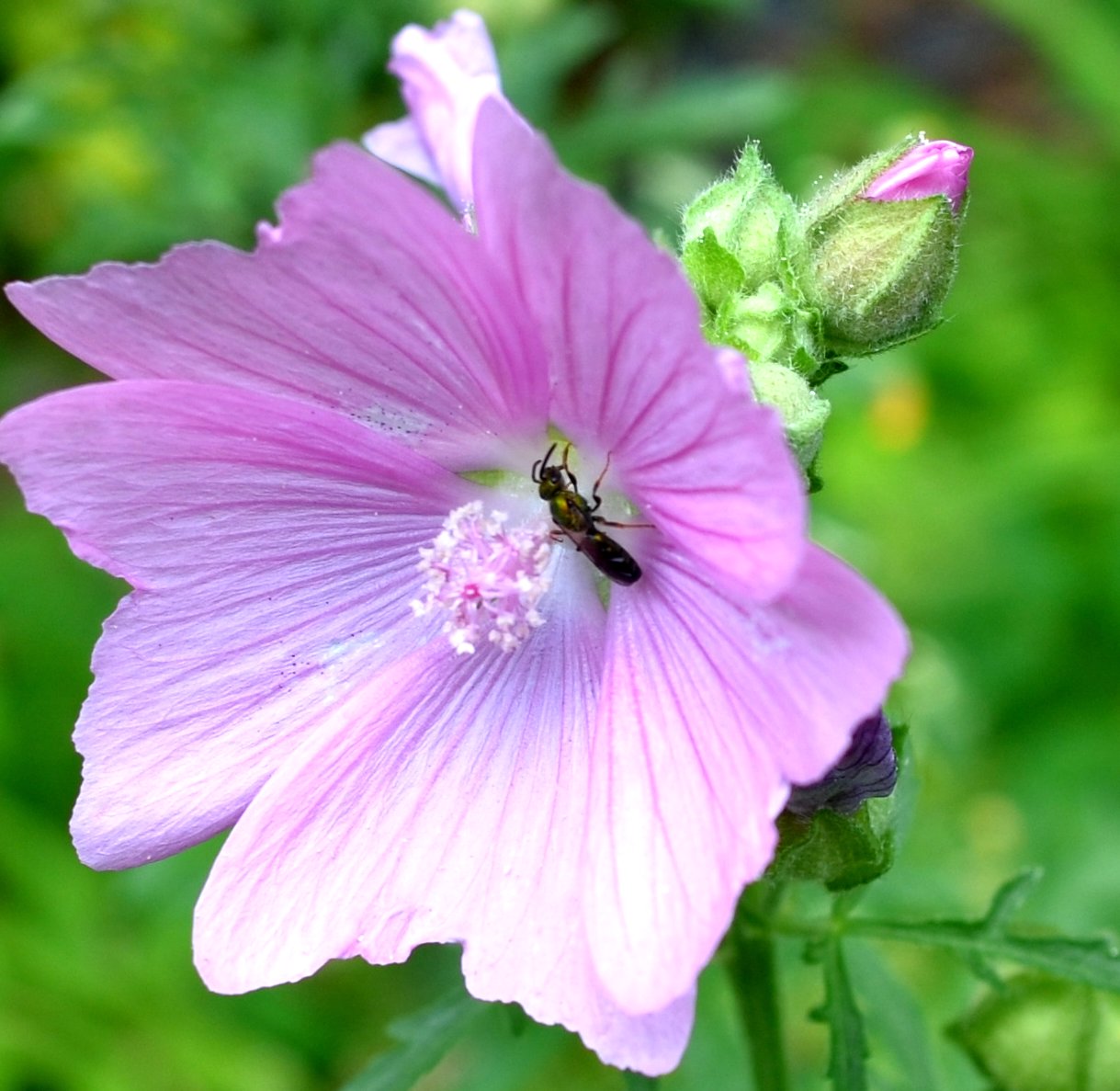

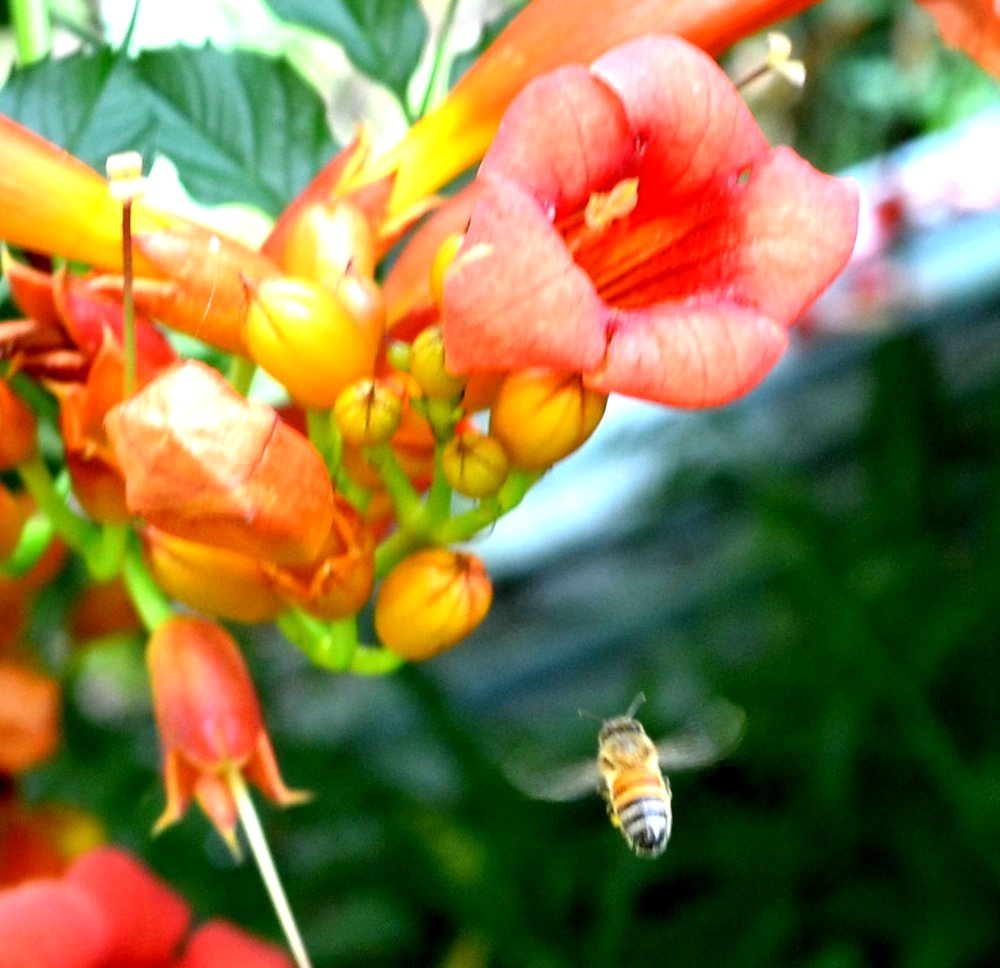
Did I say the Festival of Humidity had been curtailed? Well, that curtailment is now curtailed. I can only go out for about a half-hour at a time to take pictures. Today I planted 25 submerged plants to try to capture some of the algae in their roots, although the pond is looking a bit clearer. I'm considering buying a live trap to put out each night. If a raccoon gets caught in it, I'll just let it out in the morning. Maybe it will feel less sanguine about coming to maffick out there. Anyway, above left you see a rose mallow. Usually they are quite predatory about expanding their territory but now they are feeling the pinch themselves because of the other more dominant transgressors. Next, the pond is blooming - these lily flowers are far enough from the edge that the coons didn't shred them last night. Last, a honeybee hovers in front of the trumpetvine which is now in full flower. The honeybees are still the most common visitor, although I'm hoping that the hummingbirds are also enjoying their throaty goodness.
Remember that there is information in the name of the file for each image. You can see it by mousing over the image - look at the lower left of the screen.
I would try clicking on the image. If the little "+" sign appears, it means you can enlarge again. While it is in "+" mode, click on something you want to see more clearly and it will zoom to that section. Then the info is displayed in the address line above. If the image has been cropped
so that clicking on it doesn't result in a larger picture, you can always hit control-plus to increase the size of the image.
I'm not sure if this very red ant is really an ant. Apparently there are bugs whose nymphs look like these lumpy ants. This next one is actually beating its wings so hard you can't see them. The good or bad news (depends on if you mind their nibbling on tree bark) is that the barklouses are back. They are so small but so delicate I can't hate them too much.
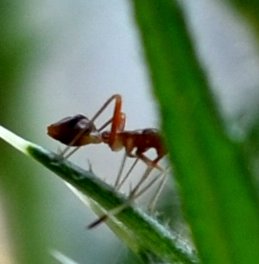
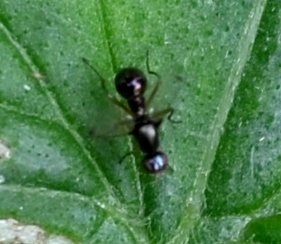
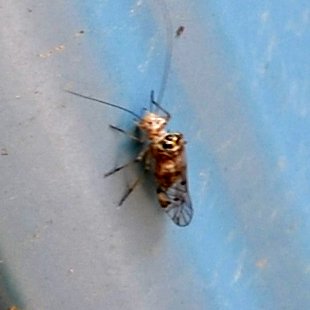
The little green sweat bees are busily enjoying the nectar of the mallow, the trumpetvine, and various other nectar stands. Other greedy feeders include these two kinds of tumbling flower beetles. I really like the mottled one on the right.
 .
.
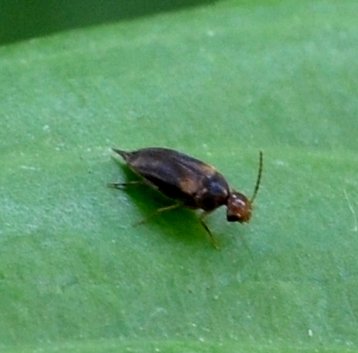
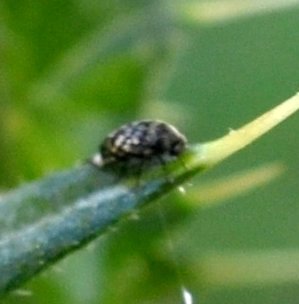
That mallow is a popular treat among the Japanese beetles too, although I suspect they like the petals as much as the nectar. This lily leaf beetle was back on the tiger lilies. They love the leaves more than the flowers. The lightning bugs are here for the summer weather.
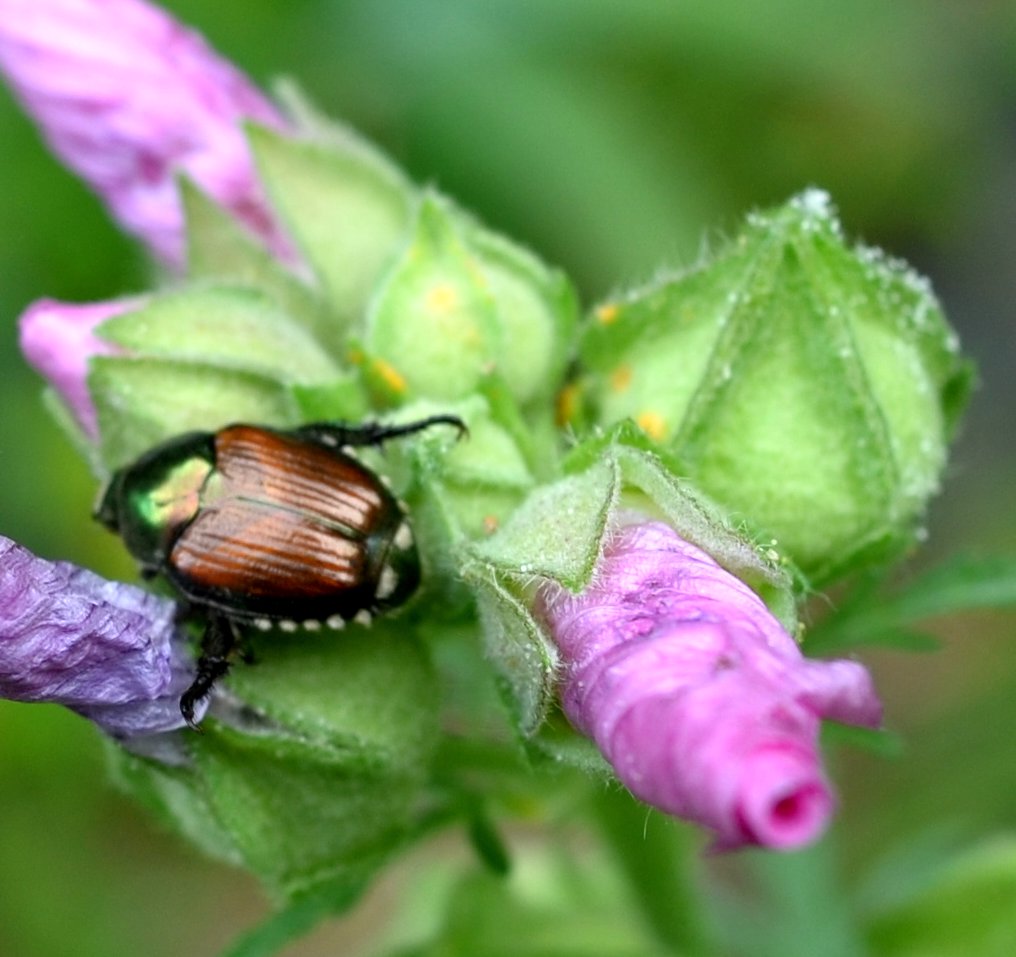
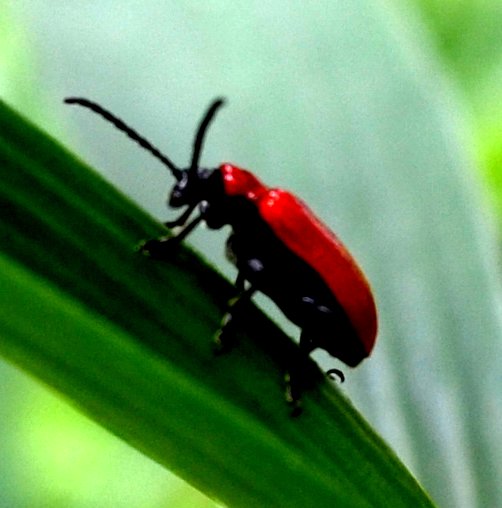
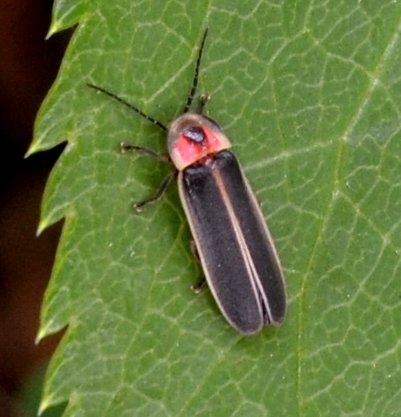
Since my swamp milkweed hasn't bloomed (again!) I got this picture from my neighbors - the swamp milkweed beetle. Next two weevils - note the similarities between them.
 .
.
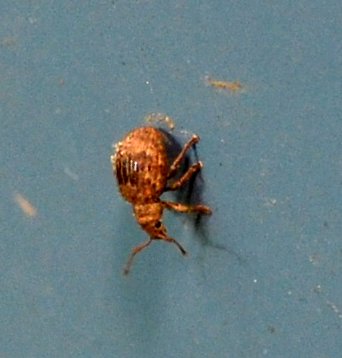

On to the bugs. I don't know this first one (or indeed if it really is a bug).The pretty red bug with black winglets turns out to be a baby boxelder bug. And this one which we only see in silhouette under a redbug leaf is another unknown.
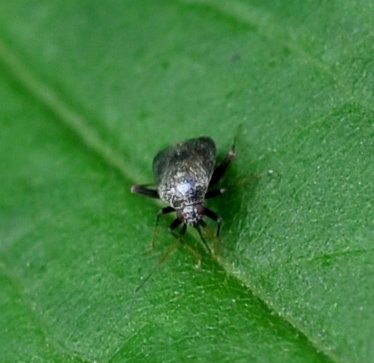
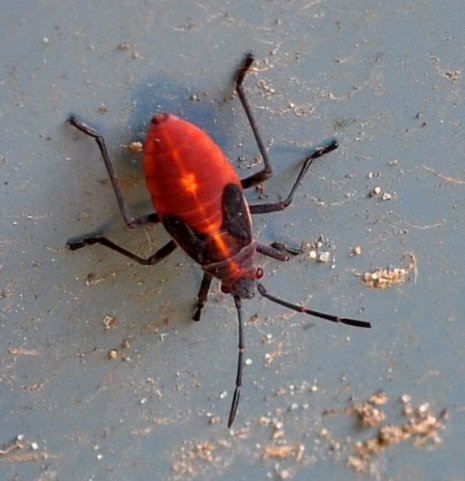
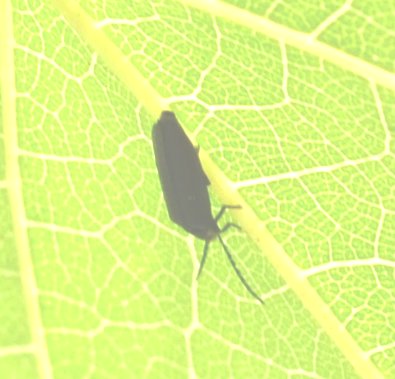
Of course you remember this little nymph in the blue tutu. A couple of days after its disco performance, one of them appeared on a ripe black raspberry. They blended right in with their electric blue colors. Just a little later that day, I found this one which must be a later instar - now it looks much more like this brownish one that also seems to be raving out there on the shop. Last, our favorite spittlebug.
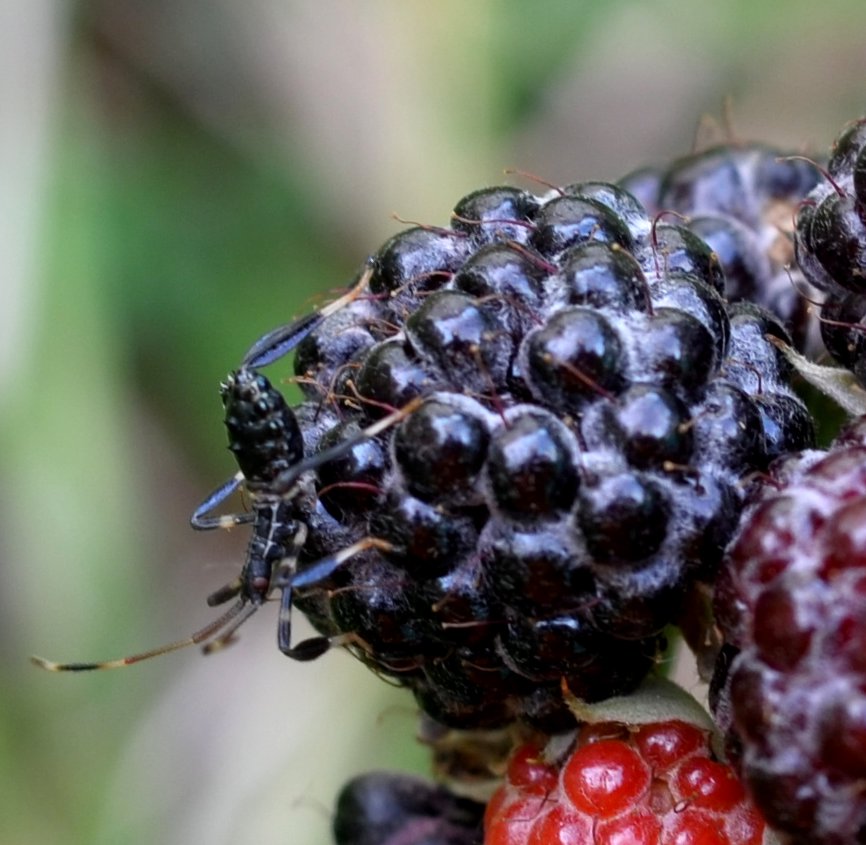
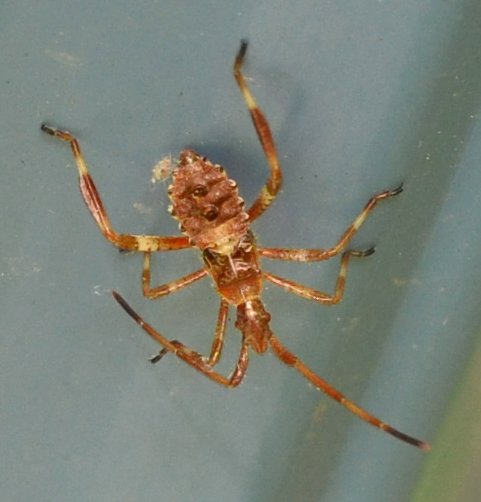

The leafhoppers rule the summer. Here's that conehead of the bug world, the Aphrodes leafhopper. Above it on the thistle is another similarly shaped one but with such a different pattern. OMG, look at that. They are NOT just friends. The far right one is either a spittlebug or a leafhopper, but I don't know which.
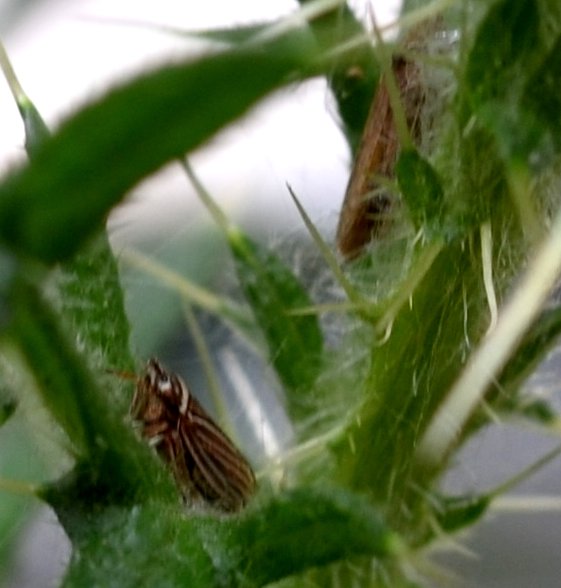
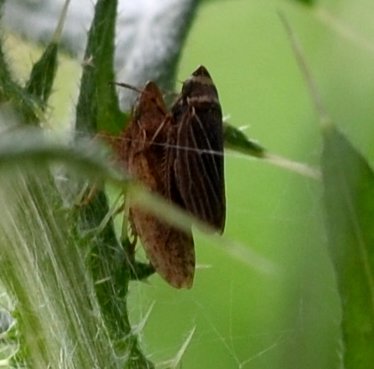
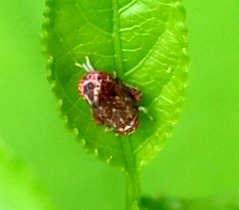
Meanne Jeanne, you had better take care. This leafhopper is the Japanese maple leafhopper. You've got the only Japanese Maple around The all-green one looks just its size and shape. I think at one time I knew a name for this bright green one. Oh dear.
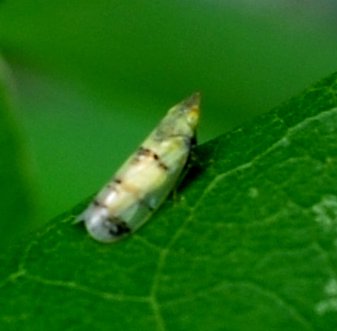


Here's one of those little Coelidia olitoria nymphs - in a kind of woven-look pattern. OOps! (December 16 2020 note:) This first one is not Coelidia olitoria - it is the nymph of the Japanese (not maple) Leafhopper!!!! And here two pictures of one I found today, just before closing the book on the week. And another note: Some time ago, Coelidia had a name change to Jikradia. So these last two are your first example of Jikradia olitoria.
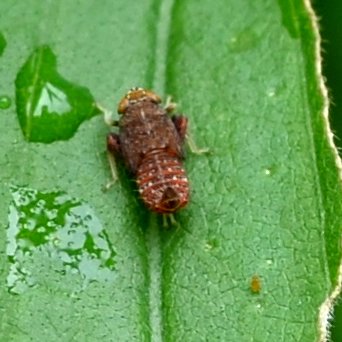
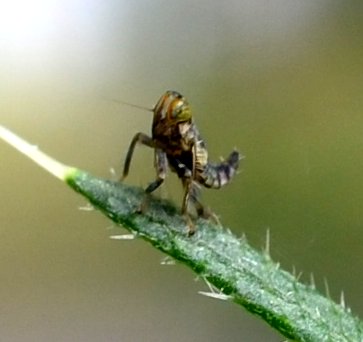
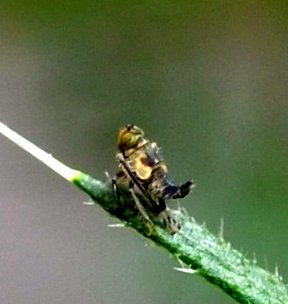
This candy-striper is a different color, isn't it? It has a very bright green to go with the red, unlike the usual blue or even aqua colour. For comparison purposes, here's one of the more usual (for my yard) red and BLUE ones. This last one seems to be watching a nursery - could they be eggs or tiny live-born babies?

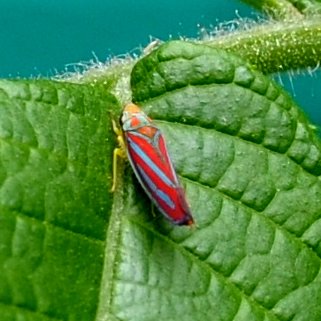

Now that you are attached to the candy-stripers, here's a sad note for you. This tiny spider has bagged one for its tea. Not sure what this second one is! Now the two-mark treehoppers are moving out, this one into a raspberry cane. Funny how its thorn fit in perfectly in the redbud tree, and not too much with the light bluish-green of the raspberry cane. Meanwhile, on one of my thistle plants I found two of the Entylia carinata (camel-shaped) treehoppers and an ant which ran when I focused on it. It had probably been tending the camel.
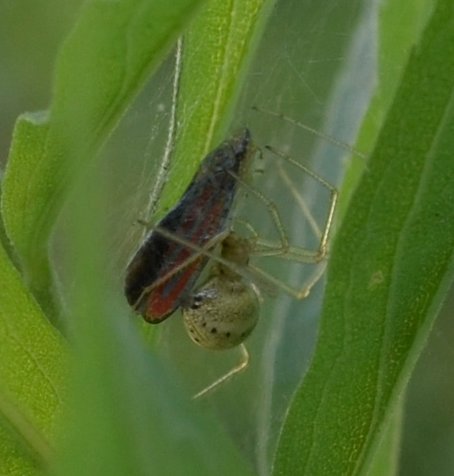
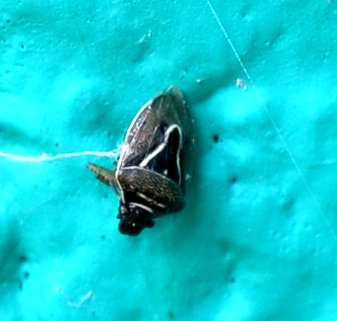
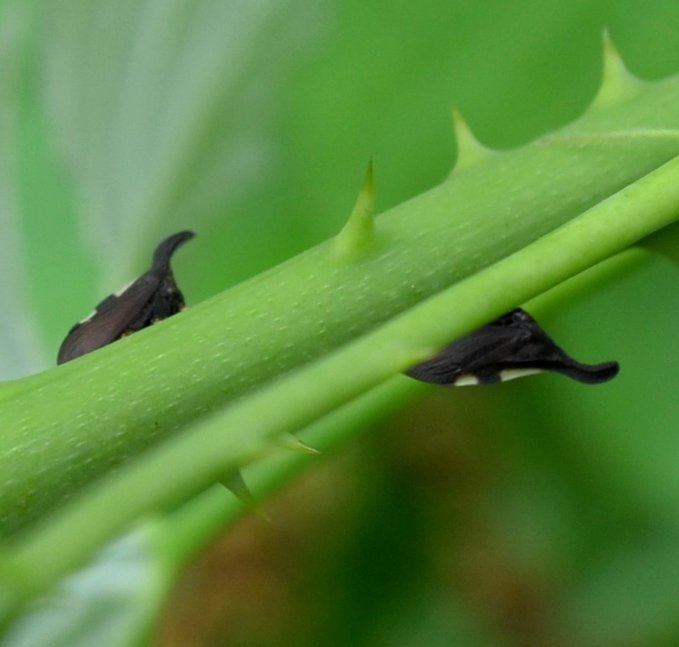
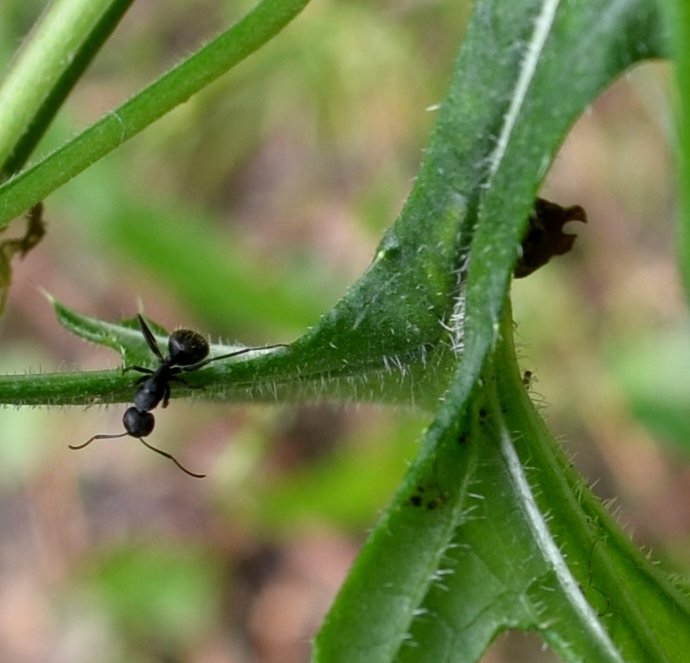
This blue and gold MInettia fly (looking extremely pregnant) was a surprise, even though we had them last year. This yellow fly seems to be related, possibly because they share a most pregnant body build. These tiny zinnias are the perfect landing place for the tiny hoverfly, whereas this one found the wrong landing place - too close to a Common House Spider.
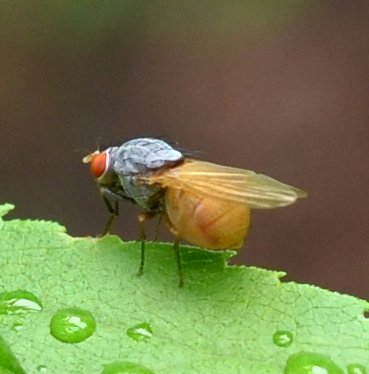
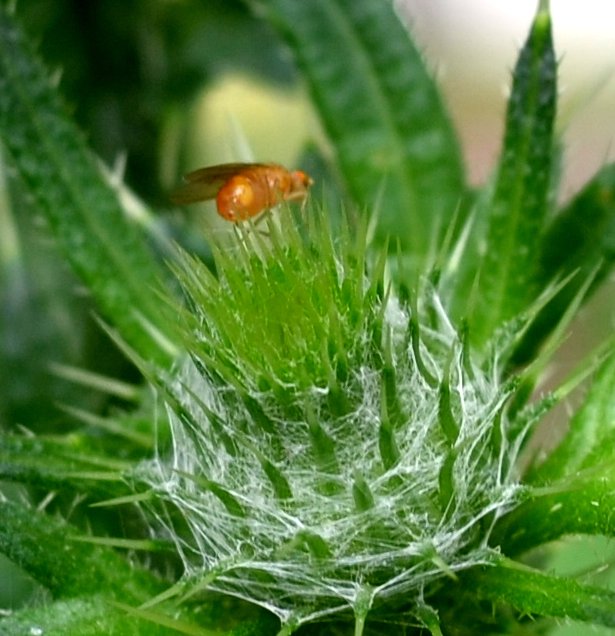

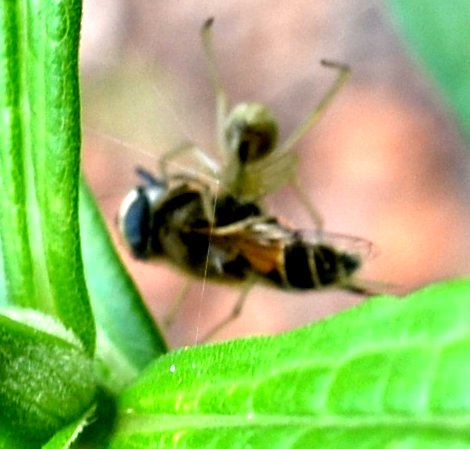
This nice robber fly didn't rob us, but actually impressed us with his hairy and prickly legs. The stilt-legged fly was back with one leg missing. And I can never resist these long-legged flies, with their dainty iridescence.
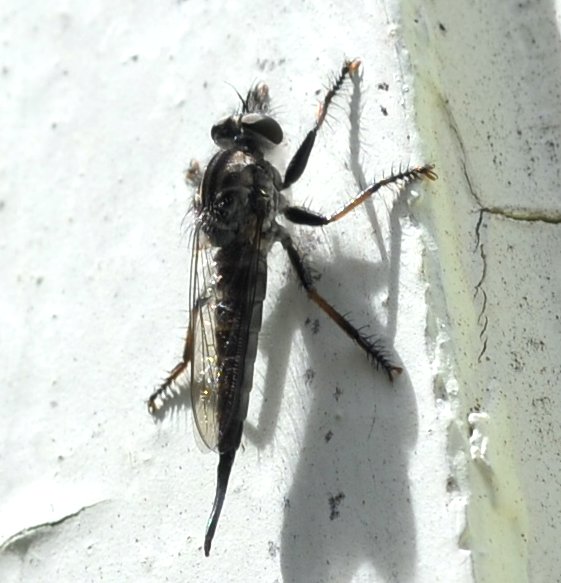


Another kind of long-legged fly, this one with the spikiest legs you've ever seen. And two new flies (to me). Could this middle one be a hoverfly? The third one is a Vinegar Fly.

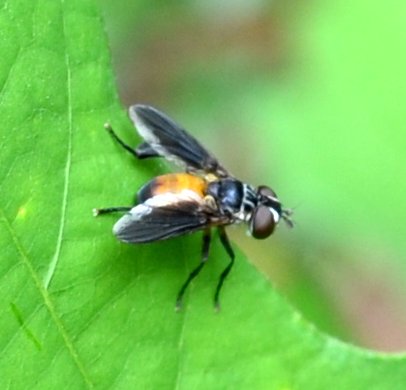
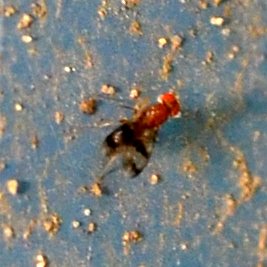
How about some more flower pictures to cleanse your palate? Here is a hosta that grows next to the generator. This hibiscus stays indoors all winter and blooms all summer. This winter I decided to try out some leftover bulb food on it and it has really been much more vigorous and produced many more blooms since then. The Tall Common Evening Primrose blooms in the evening near dusk. You can stand out there and watch and wait and then, just as you are about to go in, Shwoosh- the bud flies open. It is an amazing sight. The flower trembles a bit as its petals are readying themselves for the big show. And then in the space of a few seconds, the whole thing just IS open.
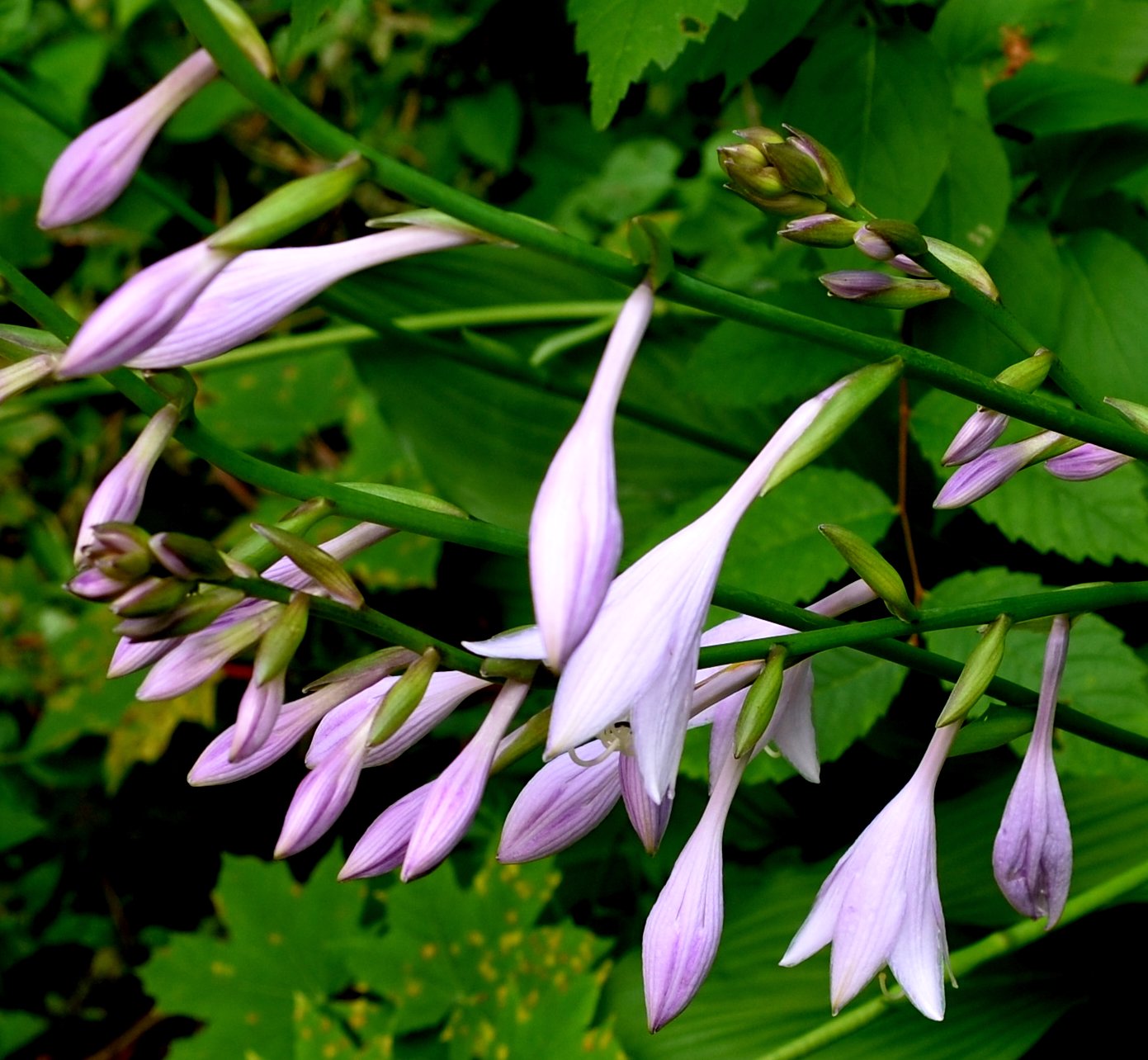
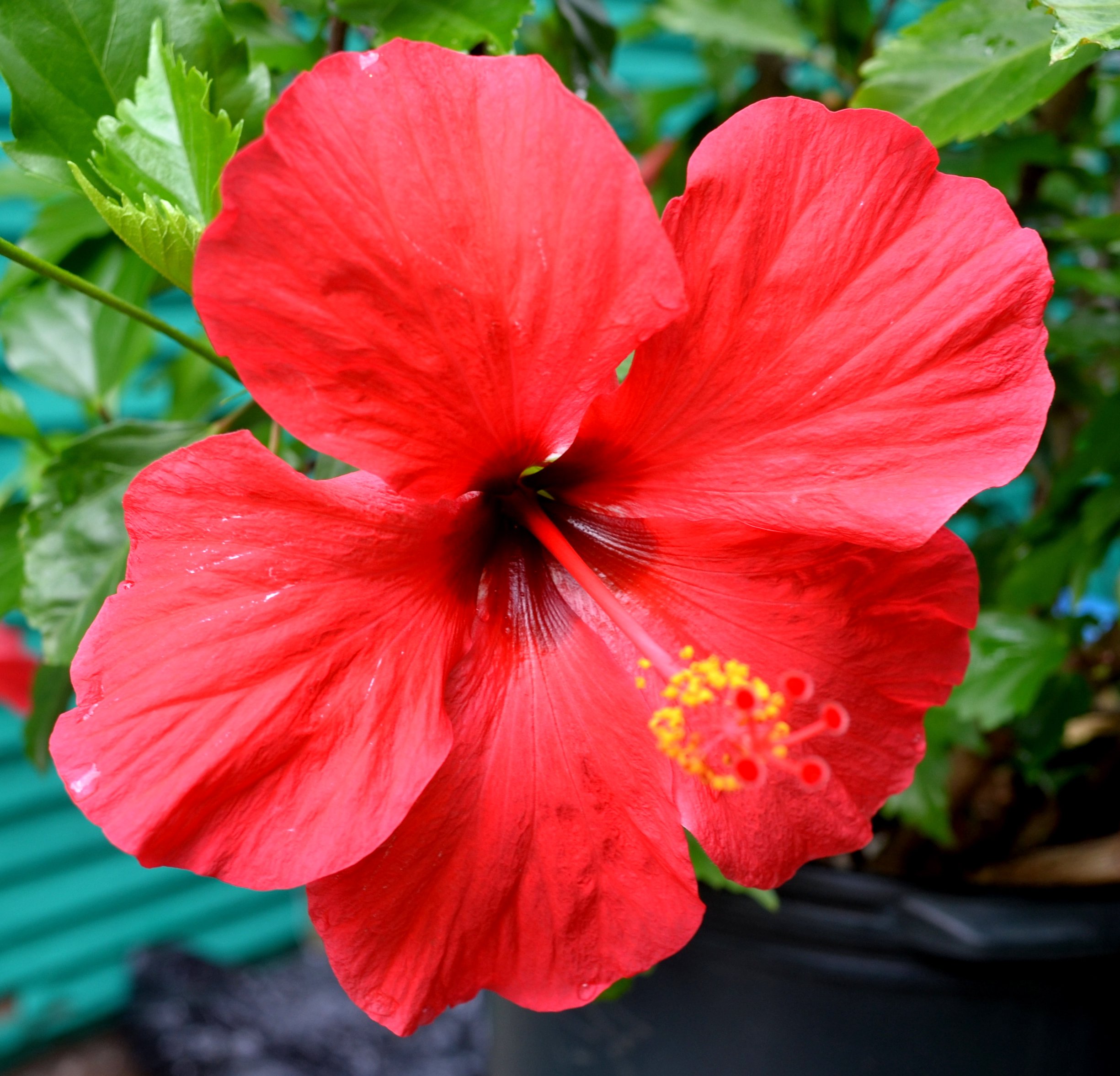
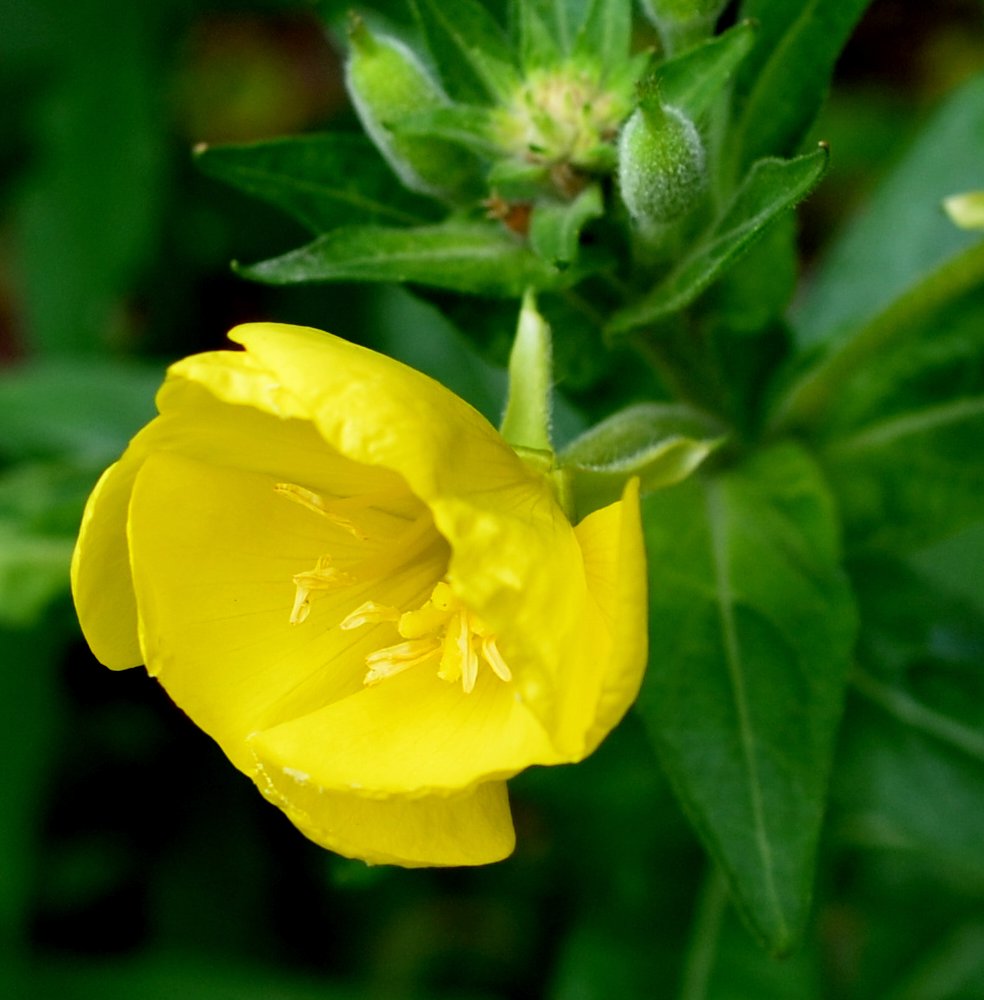
Here are some one-individual images. This harvestman was roaming around, looking for fun or maybe food (bugs). It has the proverbial six-pack. Meanwhile, for the past couple of days, mayflies have been hatching and sitting around on the shop siding waiting for the perfect moment to fly off on their one day of frolicking, eating (bugs), mating and laying eggs, and then they've had the one big day of life. The third critter seems to be a Millipede, rather than a Centipede because of the two legs coming from each segment.



Everywhere you walk, you disturb some little moth and usually you don't get to see much of it. This week, we had three that just sat still and let you take pictures of them. The first two may be a pair - I've sent their portraits off to bugguide.net. The center one may be a re-run from last week.
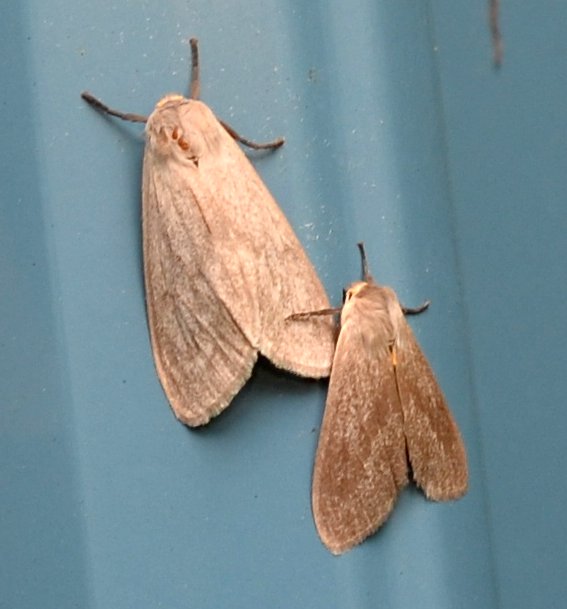
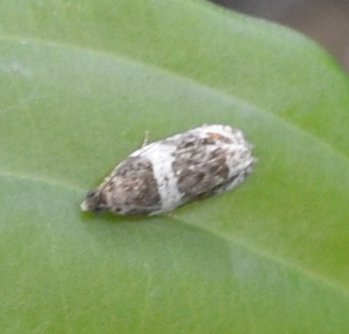
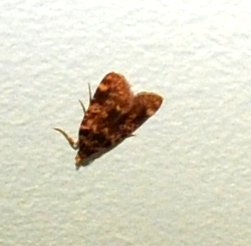
Remember when we had a few tiny orthopteran nymphs? Well, they may or may not have been the younger version of some of these. They are much larger than the miniaturized ones you saw a couple of weeks ago. This first one seems to have a small ovipositor already, or maybe not. It's hard to tell so young. If it is an ovipositor, she's a female. Next is her face. Third is definitely a young grasshopper. Which grasshopper? I haven't asked the experts yet.

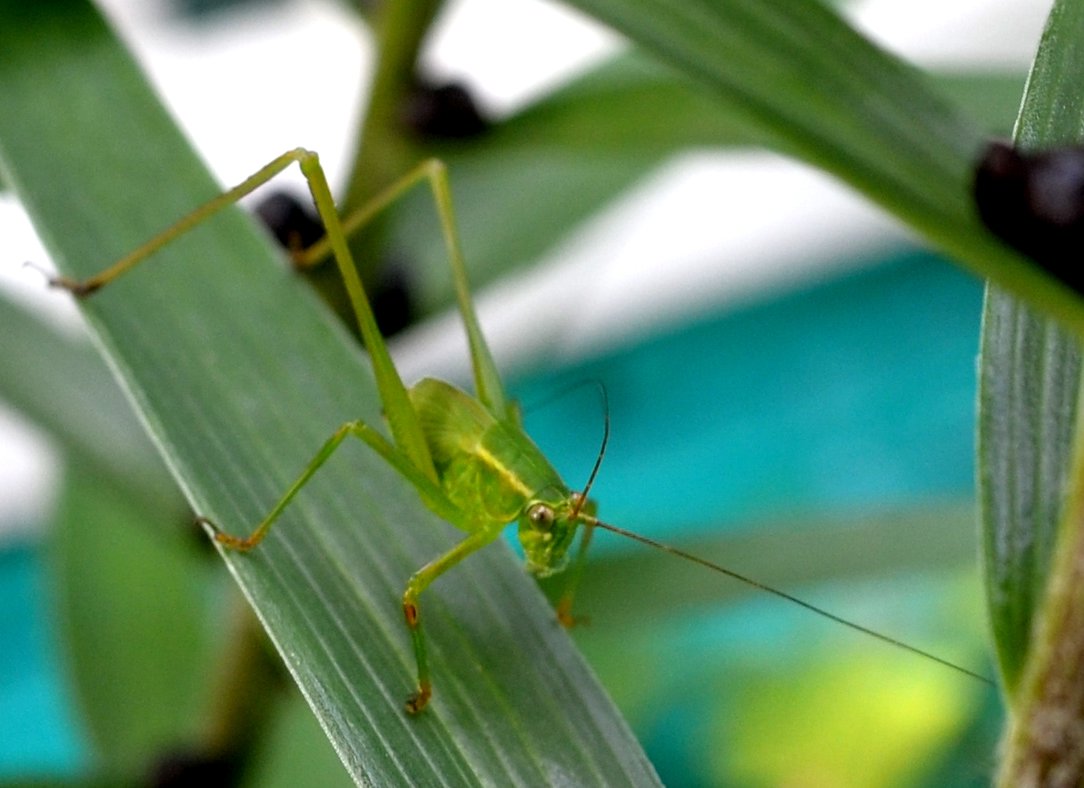

The Great Black Wasp has discovered the Trumpetvine. I've never seen such a mass of huge heavy-hanging horns. They say that alliteration makes any kind of nonsense into great literature. Did it? Anyway, each day more trumpets open up and more fall onto the ground, making it almost a red carpet. Here's a much smaller wasp. And an even smaller one.

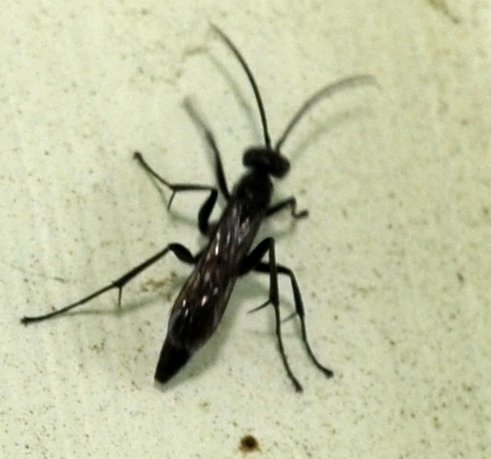
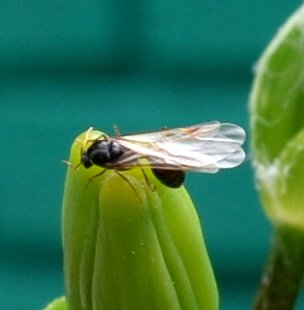
Of course, you're champing at the bit to see what has become of our paper wasps' nest!
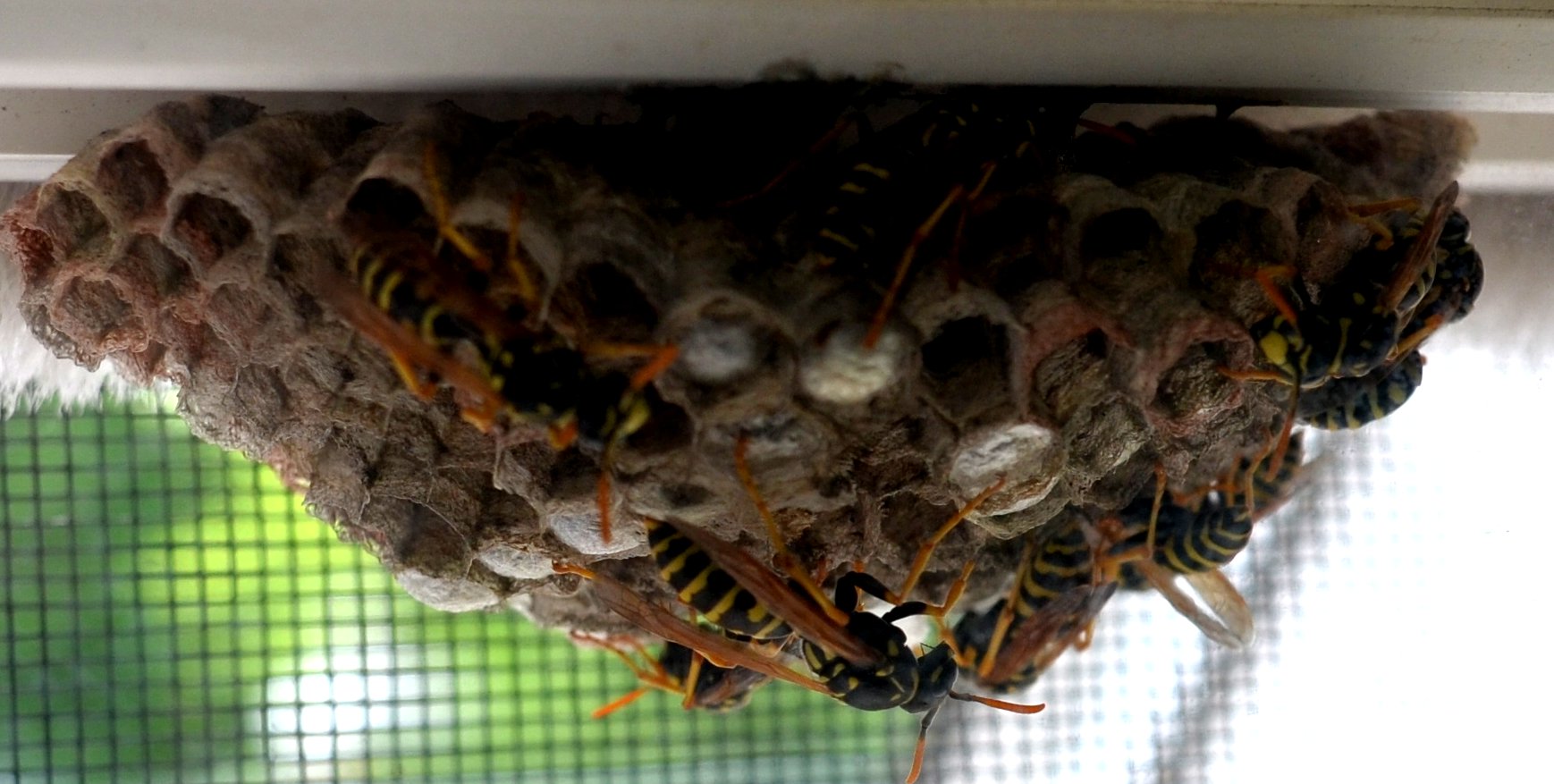
I can hear you now chanting Spiders! Spiders! Spiders! I thought you'd never ask. Well, the Common House Spiders, or chs, as I like to abbreviate them, have babies. Here is the egg sac and zillions of young ones spilling out. Is that the mama spider down underneath or another individual looking for brunch? The grass spiders are all over now, building their "sheet webs" so that anything that touches the web will bring Grassie to welcome visitors. They build these nests all over the stems and leaves, and are especially fond of using old tiger lily plants. And to quote Douglas Adams, here's the ever more ineptly named six-spotted orbweaver.
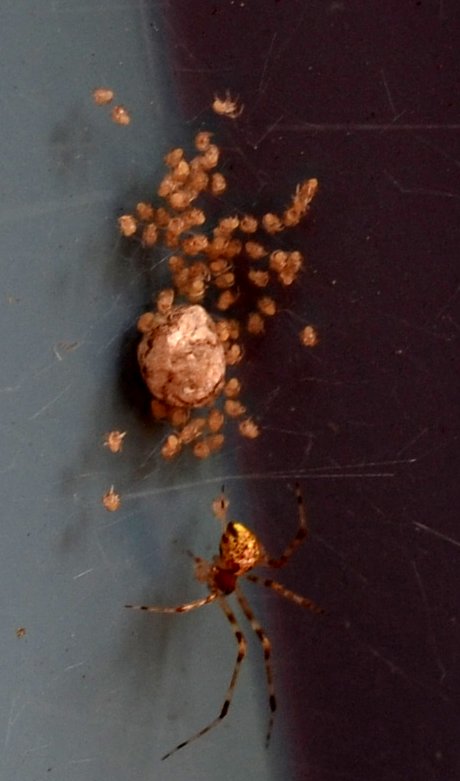
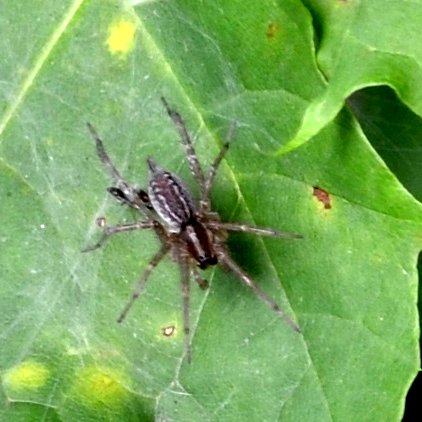
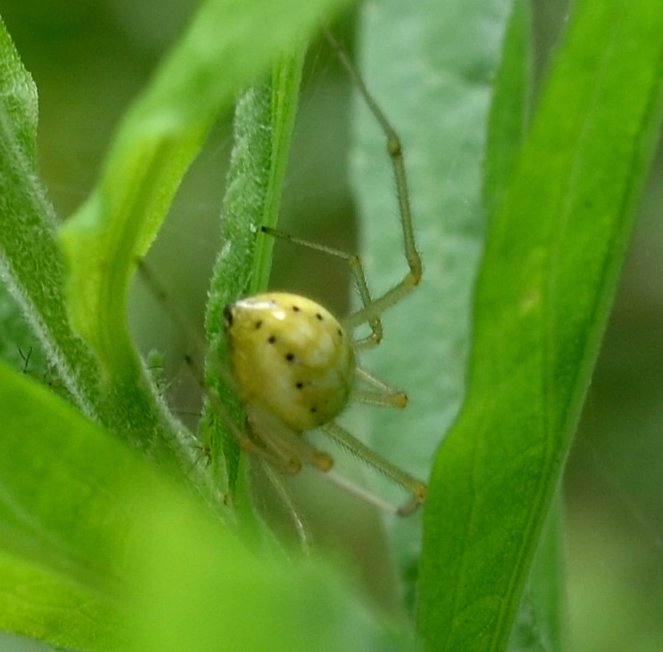
Some more that we've seen and as quickly forgotten their names: This one with the purple decorations (of course in the dark it is hard to see the purple, sorry!), this long-jawed one that looks as if it got its arms caught in a juggling match, and this six-legged one.
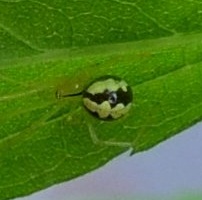

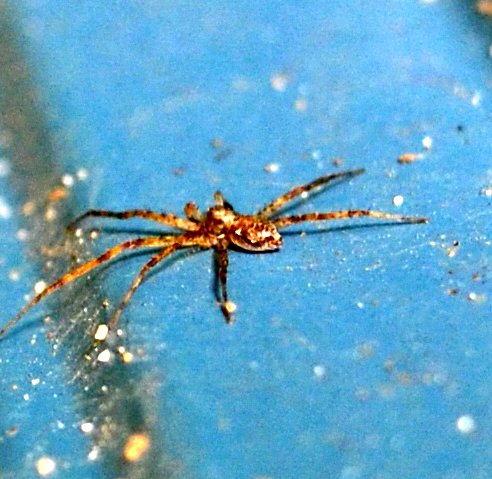
And one of my favorites, the Pirate Spider. They're a favorite because they seem to have a big head with white eyes. This one seems to be looking down its long bulbous nose, somewhat like Elmo the Muppet.
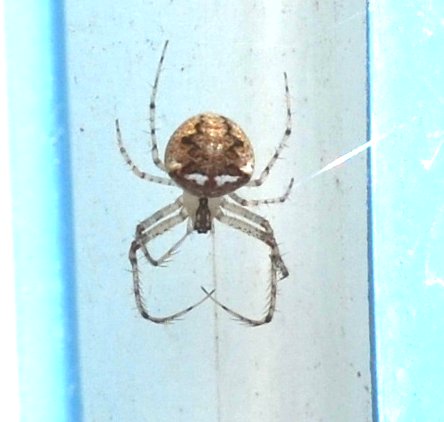
All right, now what? Well, I have been trying to figure out how many tadpoles are still alive. But the other day I took this picture. You can plainly see that these tadpoles are not all solid black. Well, I did some reading up and found that the ones who will be toads should be black. The mottled ones are likely to be frogs. I'm guessing that I have a mixture of grey tree frogs and American toads. Not only that, but some of the mottled ones actually have already got legs. So now I'm guessing that this is an accumulation of various sets of tadpoles, some laid earlier than others.
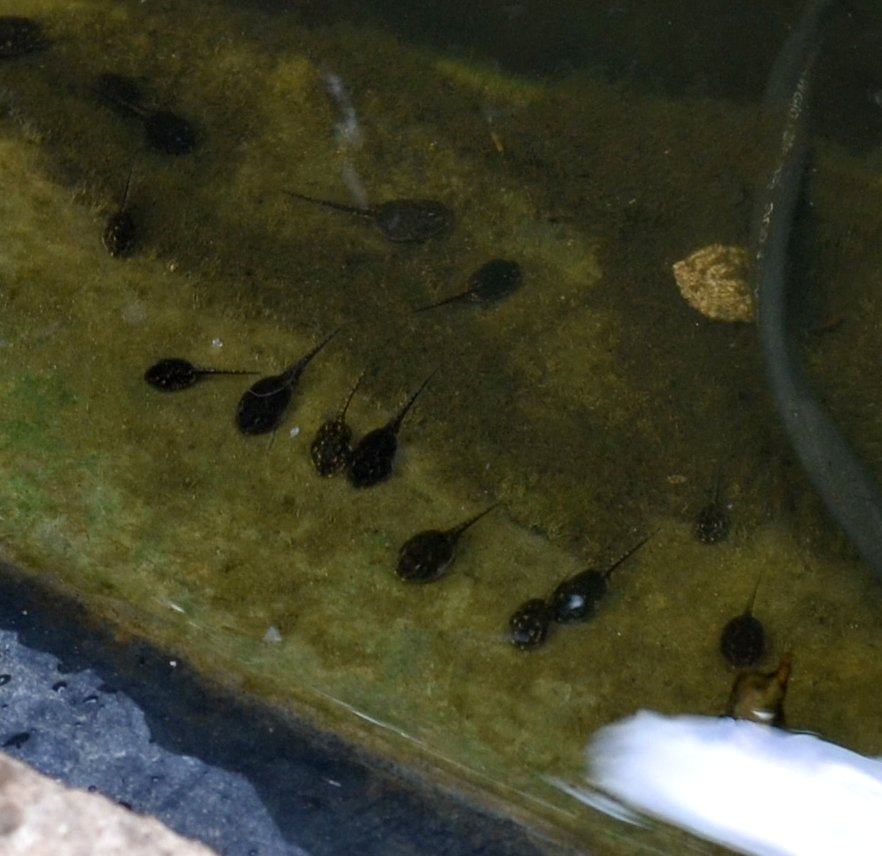
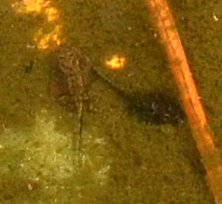
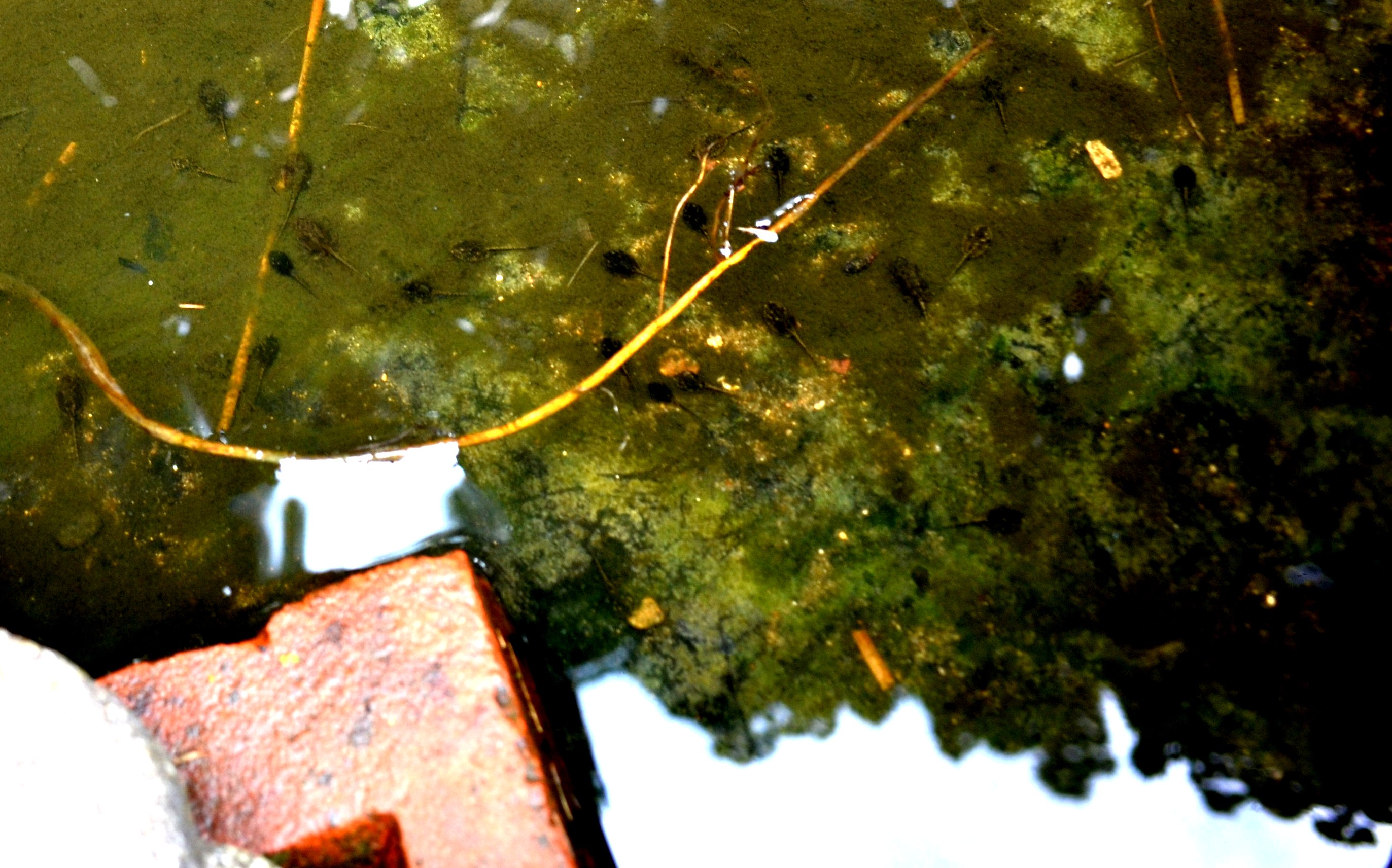
Then this afternoon (July 9) I was relaxing by the pond and saw something jumping on the other side of the pond. Guess what I saw? A mottled frog AND a black toad. Are you as fuddled as I am? Who knows what lurks in the heart of toad?


So, all in all, it has been an interesting week. Thank goodness! But I'll be back next time with yet another confusing story! Keep well, all.
Back to July 10
On to July 17
Back to 2016 menu
Back to main menu
copyright Martha O'Kennon 2016









 .
.





 .
.





























































